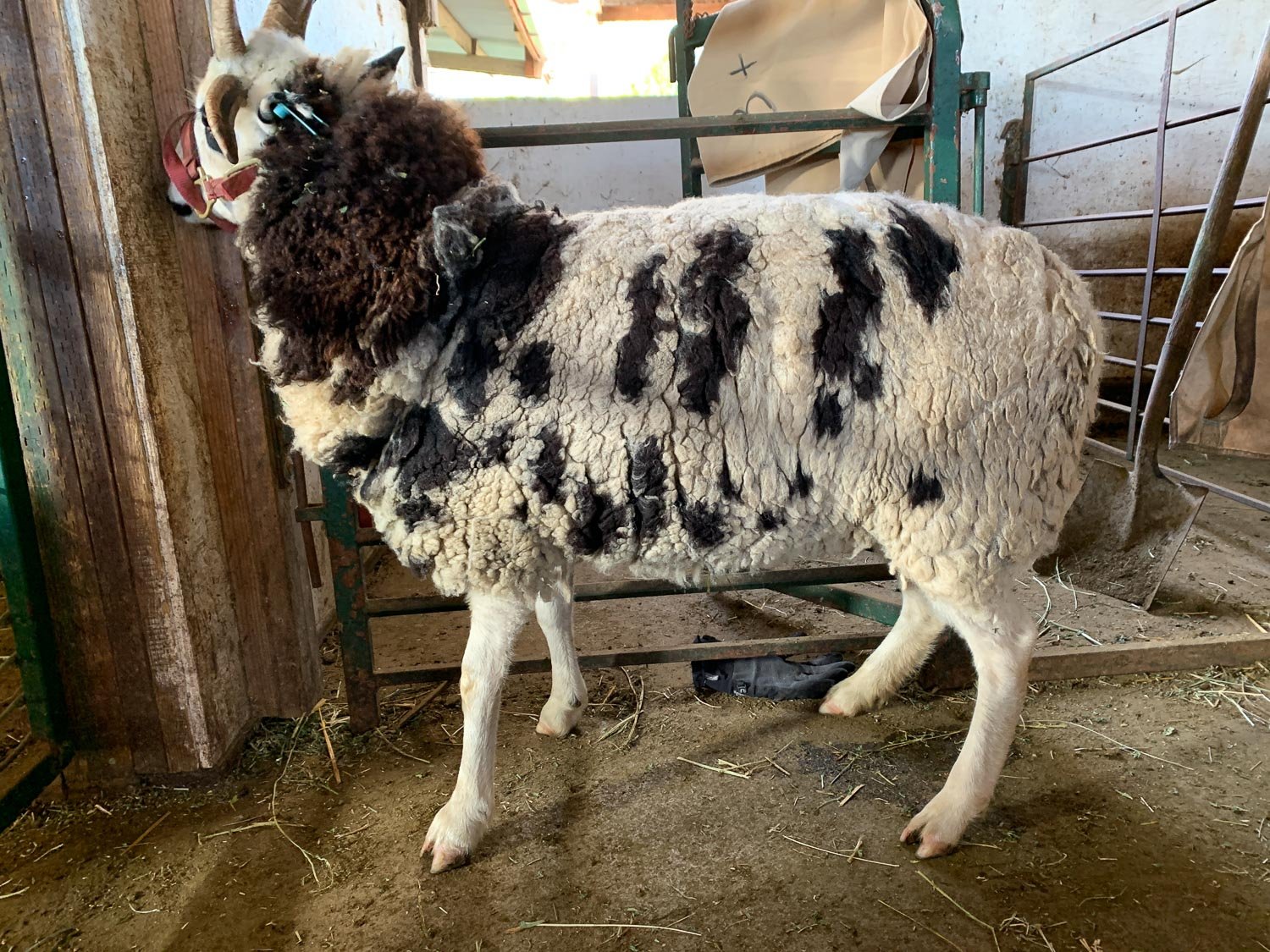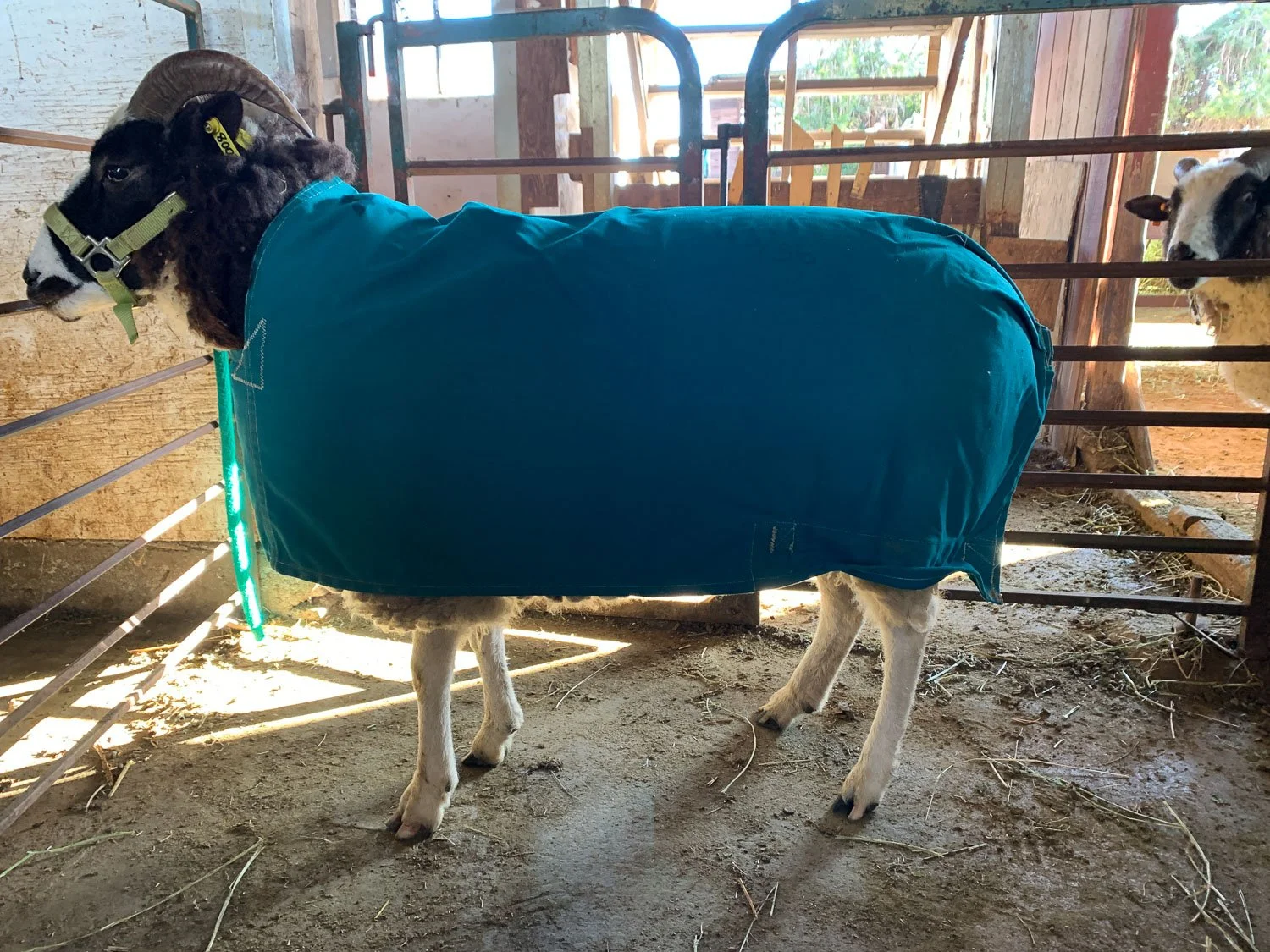Why I Charge More for a Coated Fleece
/People always ask why some sheep have coats or covers. If you’re a spinner you know the answer. Spinners want to work with the cleanest wool possible. We’re not so worried about dust and dirt that accumulates from living outside. It’s the vegetable matter (known as VM) that is the problem. VM includes bits of alfalfa or grass hay in the fleeces of sheep fed in the barn or foxtails and other seedheads from pasture or range plants that have gone to seed. What do you know about seed dispersal? The most successful plants have developed means to get their seeds spread as far as possible. That often refers to foxtails or burrs or stickers that get caught in sheep fleece or your socks or your dogs’ fur. Washing does not remove VM. Some of it drops out with carding or combing, but much does not. In large (huge) commercial mills there are chemical processes to remove VM, but those are not available (or desirable) in our small and mid-size mills.
So how do we avoid contaminating fleeces?
KEEP HAY FROM DROPPING ON SHEEP. When I feed I chase them all out of the barn and close the gate. Then I put hay in the feeders before letting the sheep back in. At least that way I’m not dropping hay on sheep. Notice the wood panels in the feeders. The sheep feed from the base of the panels…EXCEPT for those sheep who insist on putting feet on the feeder and grabbing mouthfuls over the top. The goats do that all the time—grab a mouthful and then turn their heads and drop it on the nearest sheep. This is not a perfect system.
Coating sheep is another way to promote VM-free fleece. Some farmers who are well known for growing premium wool coat all their sheep. I choose a few to coat. It is usually those sheep that have been shown at a fair or fiber show. I use coats during transportation and at the show and then continue to coat them for the rest of the year. There have been no shows now for two years so I chose a few to coat anyway.
There are issues with coats. One is that I don’t like looking at coated sheep. I like the spots and the natural look of my sheep and that is how I’d rather see them. The other issue though is the amount of work involved. Not only do you need to change coats at least 3 or 4 times a year as the fleeces grow out, but there is a lot of coat maintenance, something that is worse when you have horned sheep. The coat on the sheep above is doing much good at this point.
Another problem coat. In this photo you can tell one of the benefits of coating sheep. The fleece maintains a darker color throughout because the tips aren’t sunbleached. This is a lilac sheep so her fleece is a brown color instead of black. You can tell the difference the coat makes by comparing the uncoated neck wool with what was under the coat that is now torn and dragging.
This is Quora, a ewe who will be two at her next shearing. The coat is not only torn but is getting too tight as the wool grows. This photo was from August of this year.
Here is how the fleece looks.
These are the coats I replaced earlier in the year. These have all been washed but now need to be repaired. I do not have an industrial sewing machine and a home machine can only do so much. I can sew rips and use patches, but it gets tricky when you have seams in multiple layers of thick fabric.
I changed four coats this morning. This is Quora, the ewe whose torn coat was replaced in August. This one is getting tight around the neck and is also torn.
Notice the true black color where the coat was protecting the wool.
I may need to claim this fleece for myself.
Here’s the new coat—Size 4+ .
I don’t have a photo of this ewe, Pecan, before removing the coat but you can see from the neck and tail now tight that coat was on her. Pecan is another lilac ewe (that gray brown color instead of black).
Pecan’s fleece. Wait! Maybe I need to keep this one.
Pecan in her new coat—still sort of tight on that fleece. We have 7 weeks until shearing. Can this coat last?
This is Pecan’s twin, Sandie, with her coat removed. Her fleece is still in good shape, but when coats get too tight they can contribute to felting on the sheep.
Sandie’s fleece.
Sandie’s new coat.
Soprano’s coat wasn’t as tight as some of the others, but it definitely needs repair.
Soprano’s fleece.
This coat is a better fit and has no repairs… yet.
These are the four ewes whose coats were changed today. I think there are two or three other coated sheep in the flock.






















